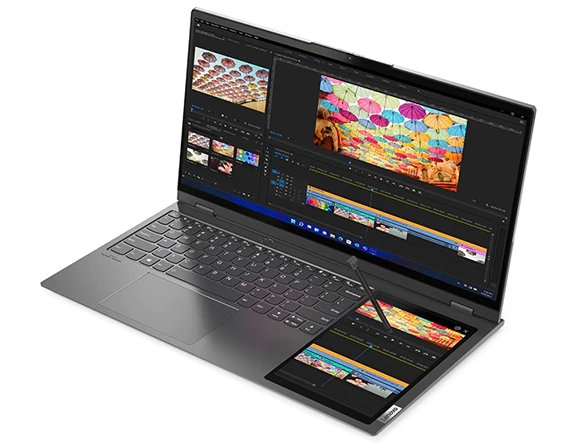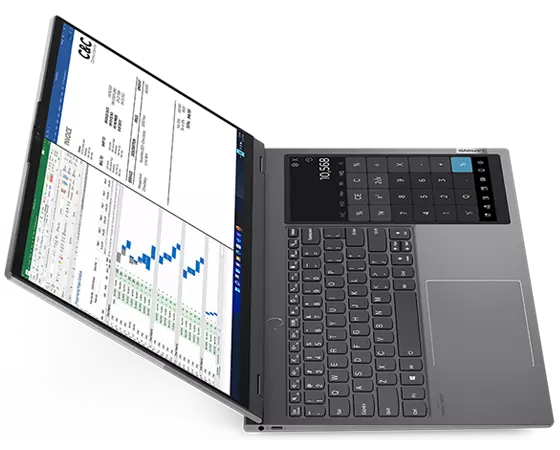Lenovo Unveils Laptop With Second, Smaller Screen Next to Keyboard
The ThinkBook Plus Gen 3
Here's another experimental laptop design, not quite as weird as Asus' folding-screen machine. Lenovo has announced the ThinkBook Plus Gen 3, a 17" laptop that has an additional and portrait-oriented 8" screen right next to the keyboard.

The unusual layout means the upper screen has a 21:10 aspect ratio.

The lower screen "supports many productivity apps and phone syncing and content mirroring," the company writes. "It also lets you easily duplicate or extend the primary display."



"The 8" LCD display also has useful time-saving apps, widgets, and an express app launcher. In a Teams meeting, you can jot down your idea on the smaller screen, mirror it to the main display, and share it with others instantly. You can also stream videos on the main screen while editing timelines on the secondary screen. The ThinkBook Plus Gen 3 laptop makes multitasking easy and beats tabbing through applications hands down."

Lenovo says the Gen 3's 70Whr battery is good enough to power both screens long enough for you to "work through the day uninterrupted."

As with Asus's new laptop, pricing and release dates have not yet been announced. Tech specs are here.
-
oFavorite This
-
Q5Comment
K
{Welcome
Create a Core77 Account
Already have an account? Sign In
By creating a Core77 account you confirm that you accept the Terms of Use
K
Reset Password
Please enter your email and we will send an email to reset your password.


Comments
Apple tried and failed with the macbook pro touch bar
Wow, and I thought old school Logitech was the worst offender in the “Left-handers NEED NOT EXIST” category. But with this, Lenovo is finally poised to wrest that title away.
Great, a touch screen where I can frequently graze it with my palm and forearm while I type. I often use my phone and laptop together, but I can't say I've ever put the latter directly next to the keyboard. I can't see the point of this, it seems more representative of the low cost of screens, than of a useful innovation. It's like when LEDs got cheap, so everything had to have a light.
Adobe make an app that places MacOS Photoshop tool palettes on to iOS touch devices... so the concept of using a phone as a desktop OS input device isn't as strange as you might think.